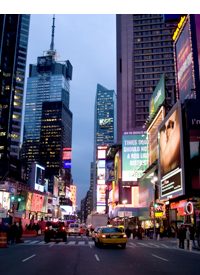
As a result of the new standardized exams, of which there are approximately 12, students will be required to take up to eight additional tests every year, starting in the third grade. The exams are in addition to the English, Math, and Regents exams that the students already take.
The New York Times reports:
The exams, which would begin rolling out as early as next academic year, are being created as part of a statewide overhaul of how teachers are evaluated. Under a law passed last year that helped the state win $700 million in a federal grant competition, known as Race to the Top, each school district must find a way to evaluate teachers on a scale from “ineffective” to “highly effective,” with teachers facing potential firing if they are rated ineffective for two years in a row.
The tests would be given at the start of the year, and at the end of the year, in order to properly assess how much learning has taken place throughout the course of the year.
The law under which the new exams are being implemented require 40 percent of the teachers’ grades to be based on the standardized tests, or other “rigorous, comparable” assessments of student performance. According to the NYT, half of those measures will come from state tests, and the other half will be selected on a local level.
The remaining 60 percent of the teachers’ grades will be based on a number of subjective criteria, including principal evaluations.
Because most of the decisions for teacher assessments will be made at the local level, most districts in the state of New York will not be creating new standardized tests, as it is an expensive process that requires a great deal of research.
However, New York City is forging ahead with the new standardized tests, having made it a focal point of its reform efforts. In fact, the NYC school district has announced plans to use one-quarter of the $256 million in federal grant money it received to create up to 16 new exams, covering math, social studies, science, and English from grades 3 through 12.
The tests will not simply be multiple choice exams, at the request of city education officials. Instead, tests will ask the students to complete tasks, such as asking students to complete a multistep math problem, or write an essay. Chief academic officer Shael Polakow-Suransky explains that the goal of the exams is to reflect strong instructional practice, not deflect it.
Not surprisingly, the proposal has faced criticism. Critics contend that the tests will pose an added burden on students who already spend a great deal of time preparing for exams, rather than addressing larger goals that include social and emotional development.
Lisa Donlan, a NYC parent who has remained opposed to standardized testing, asserts, “We are not focusing on teaching and learning anymore; we are focusing on collecting data.”
Others articulate concerns that New York City will face problems similar to those in Kentucky and other states, where schools were forced to abandon the exams because they could not compare results from year to years. Likewise, it became clear in other states that the tests were measuring test preparation and not learning.
There are still obstacles with which officials need to contend before forging ahead with the examinations. Officials have not yet decided how they will assess subjects like art and physical education. Likewise, the teachers’ union has not signed on to the new standardized tests, a requirement under the teacher evaluation law.
“Before you start spending all this money on this, if you don’t want to waste it, you have to come to an agreement with us,” declared Michael Mulgrew, president of the United Federation of Teachers.
If the tests are approved by the union, and testing companies create the exams quickly, the city would like to implement them in 100 schools by the next academic year, and then in 500 schools the following year. By the 2013-2014 school year, the city would like to have the exams in almost all of its schools.
Many critics contend that student achievement has been inadequate as a result of lack of funding. However, as noted by the Heritage Foundation, since 1985, federal education on K-12 education has increased 138 percent, but long-term measures of student academic achievement has not shown similar increases.
New York State alone has proven that increased spending does not increase achievement. In 2010, USA Today reported that New York spent $17,173 per student for public education in the 2007-2008 school year, more than any other state and 67 percent more than the national average. However, test scores in the state of New York dropped by double digits in 2010.
While the easiest solution to correct problems in public education would be to remove the federal government’s role in it, presidential administrations continue to commit more money and more assistance to public education, and school districts are all too happy to be the recipients.
This sad cycle begs the question, if school officials and lawmakers never learn from their mistakes, how can they properly determine how to increase students’ learning?



